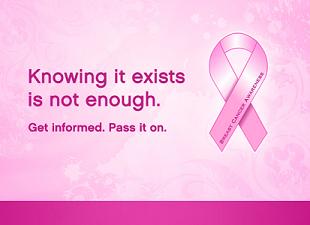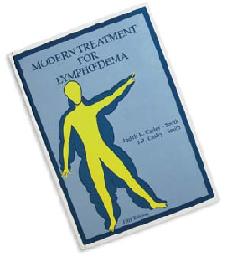Blog Roll: (Contributors)
» Hulet Smith, OT
» Megan Smith, PT
» Mike Price, OT
Topics:
Adaptive Devices
Adult Tricycles
Air Purifier
Allergy
Alternative Communication Devices
Alzheimer's Dementia Products
Aquatic Products
Arthritis Relief Products
Autism
Back Relief
Ball Pit/Pool
Bariatric
Bath Benches
Bathtub Lift
Bed Rails
Bedsores / Decubitus
Bidet
Body Solid Exercise Products
Breast Feeding Products
Bushel Trucks
Cancer
Catheters
CEU
Changing Bench
Child Car Seats
Child Care Products
Christmas Gifts
Clinic/Medical Equipment
Clinical Furniture
Cold and Flu
Communication Devices
Compression Garments
Computer Products
CPAP
Crutches
Daily Assistance Products
Daylight Lamps
Dental Care
Diabetes
Doctor's Office
Dysphagia
Electrodes
Electrolarynx
Emergency Preparedness
Ergonomic Equipment
Exam Tables
Exercise Products
Eyecare
Family Tricycles
First Aid Kits
Floor Scales
Fluidotherapy
Foot Drop
Foul Weather Gear
Furniture
Gait Trainers
General Articles
General Posts
Glassless Mirrors
Hand Sanitizer
Head Protection Helmets
Hearing Impaired
Heart Health
Heating Pad
Hip Fractures
Home Assistance Products
Home/Office Assistance
Hospital Beds
Hoyer Lifts
Hyperbaric chamber
Hyperthermia/Hypothermia
Ice/Hydration Carts
Impotence Products
Incontinence Products
Infection Control Gowns
Inspirational Stories
Lift Chairs
Light Therapy
Low Vision Products
Massage Tables & Chairs
Massage Units
Maternity
Medical Facility Products
Medical Scales
Multi-Sensory Environment
Natural Healing
Nebulizers
Non-Hospital Bedding
Nutritional Supplements
Office Furniture
One-Handed Products
Operating Room Devices
Ostomy Products
Oxygen Compressors
Oxygen Concentrator
Oxygen/Nebulizer Masks
Pain Relief
Paraffin Unit
Patient Lift
Patient Lifts
Patient Restraints
Patient Transfer Systems
Pediatric Bath Chairs
Pediatric Furniture
Pediatric Learning
Pediatric Recreation
Personal Listening Devices
Personal Warming Products
Physical Therapy
Pill Organizers
Pillows
Playground Equipment
Pool Lifts
Press Releases
Procedure Chairs
Pulse Oximeter
Reading Assistance
Reference Materials
Rehab Equipment
Rehabmart News
Rehabmart Newsletter
Respiratory Health
Rollators
Saunas
Scooters
Seniors
Shower Chairs
Shower Commode Chairs
Shower Gurney
Showers Chairs
Side Access Bathtubs
Skin Tear
Special Needs Dinnerware
Special Needs Seating
Special Report Articles
Splints
Sport Injuries
Standers
Staying Home
Stethoscopes
Stimulus Reward Toys
Stress Relief
Stroke
Strollers
Summertime Products and Summertime Fun
Talking Products
Therapy Balls
TheraTogs
Thermometers
Traction Devices & Tables
Treatment Tables
Ultrasound
Vibroacoustic Therapy
Vision Products
Walk-In Bathtub
Walking Aids
Walking Boot
Weighted Wearables
Wheelchair Accessories
Wheelchair Cushions
Wheelchair Lifts
Wheelchair Ramps
Wheelchair Transfer Systems
Wheelchairs
Women's Health
Work Hardening Products
Wound Care
October is Breast Cancer Awareness Month
Rehabmart offers many different types of breast cancer awareness items at discount prices. Visit our breast cancer awareness page to view the different products we have to offer!
October is Breast Cancer Awareness Month

While most would agree the "think pink" promotional efforts of many breast cancer organizations have been very successful in making the general public aware of this devastating disease, it is important to remember it is not just a clever marketing campaign and that thousands of lives have been and will continue to be touched by breast cancer. According to the American Cancer Society, an estimated 230,480 new cases of invasive breast cancer will be diagnosed among women in 2011, and about 2,140 cases of breast cancer are expected to occur among men.
Although there is no proven method of preventing breast cancer, the American Cancer Society recommends that women maintain a healthy weight, engage in physical activity on a regular basis, be aware of the risks of Hormone Replacement Therapy (HRT) in menopausal women, stop smoking and minimize alcohol intake. In addition to these prevention strategies, experts agree that early detection is key in fighting the breast cancer. Even though it is not a perfect early detection tool, the American Cancer society still recommends yearly mammograms for women over 40 in addition to a Clinical breast exam (CBE) by a health professional every year. Women in their 20s and 30s should have a CBE by a health professional, at least every 3 years.
It is also important that women of all ages become aware of the appearance and feel of their breasts so they can detect any changes and report them to their doctors. This can be done through a regular breast self exam (usually monthly after their period) or by simply looking and feeling breasts while bathing or changing clothes. The main goal is for women to know how their breasts look and feel and to notice any changes. Things to watch for include: changes to the feel of the breast or underarm area (knots, lumps, pain, swelling, etc); changes to the look of the breast (unusual redness, darkening, puckering or dimpling of the skin); and changes to the nipple area (discharge, inversion of the nipple, or itchy, rashy, flaky, scaly or sore nipples). While these changes to the breast may not necessarily be a sign of breast cancer, it is important to report them to your doctor or gynecologist right away.
As you are seeing pink items at Rehabmart, the grocery store or mall this October, please remember that breast cancer awareness is vital but so is educating yourself and your loved ones about the disease, prevention measures and early detection methods. To find out more, download this breast cancer information sheet: Breast Cancer. You will find out the latest information about breast cancer and maybe even help save the life of your mother, your daughter, your friend or yourself.
Rachel Huber, Medical Consumer Writer
and
Hulet Smith, OT
RehabMart Team Leader & CEO


